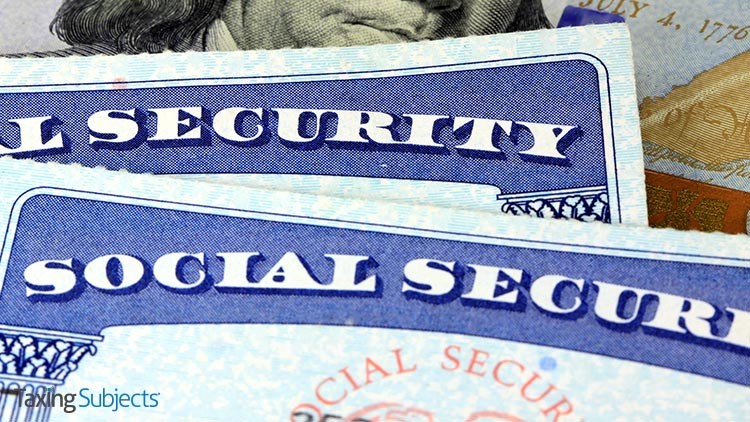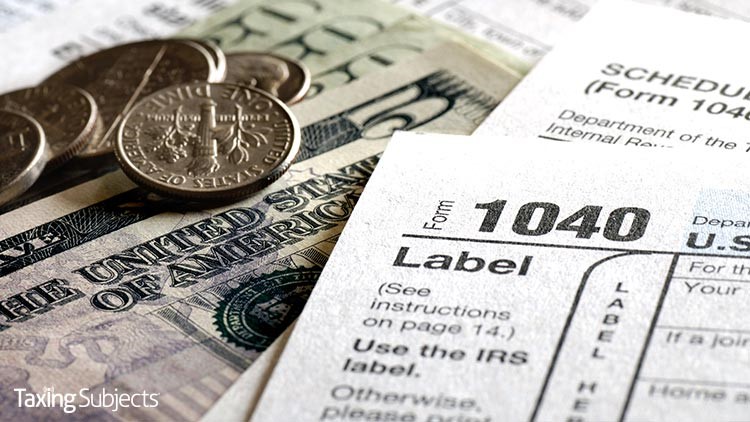by Socheata Ten EA, LLC | Oct 31, 2019 | Tax Tips and News
The IRS reports that criminals perpetrating tax-related identity theft scams are taking a new approach with one of their greatest hits: the Social Security Number scam.
According to a recent IRS tax tip, fraudsters are deploying automated phone calls to threaten taxpayers with the suspension of their Social Security Number if they don’t immediately pay their tax bill. The trick? They demand payment via “prepaid debit card, iTunes gift card, or wire transfer.”
While the IRS says that taxpayers receiving these phone calls should immediately hang up the phone, those who have never been directly contacted by the IRS might be caught off guard. After all, it’s much easier to ignore this type of scam when you know you don’t owe the IRS money.
That’s why it’s important for taxpayers to learn to spot these scams. Luckily, the IRS compiled a short list of signs related to this scam that can easily be applied to a number of similar phone and email scams.
Aside from demanding payment with prepaid debit and gift cards, the IRS said taxpayers should be wary if someone calls making the following demands:
- Ask a taxpayer to make a payment to a person or organization other than the U.S. Treasury.
- Threaten to immediately bring in local police or other law-enforcement groups to have the taxpayer arrested for not paying.
- Demand taxes be paid without giving the taxpayer the opportunity to question or appeal the amount owed.
Having to deal with scams can certainly seem overwhelming—especially if this is someone’s first brush with fraudsters. That said, the IRS is also asking anyone who has been targeted by the Social Security Number scam to report the incident to the Treasury Inspector General for Tax Administration (TIGTA), the Federal Trade Commission (FTC), and, of course, the IRS:
Remember, the more information the IRS can get about these scams, the better equipped it is to warn other taxpayers about them.
Source: IRS Tax Tip 2019-149
– Story provided by TaxingSubjects.com
by Socheata Ten EA, LLC | Oct 25, 2019 | Tax Tips and News
The IRS this week released another disaster victim-focused tax tip, reminding taxpayers what they can do to rebuild financial records lost to a storm, flood, or some other catastrophic event.
It’s no secret that the recovery effort following a natural disaster can be a stressful, withering process. Reconstructing financial records is just one piece of that puzzle, and the IRS understands that getting those documents can be confusing—especially if someone has never been through that process.
To help taxpayers get started, the IRS identified three common types of documents associated with “[proving] disaster-related losses … for tax purposes, getting federal assistance, or insurance reimbursement:” tax return transcripts, financial statements, and property records.
When it comes to getting copies of old tax transcripts, the IRS has two available options: using online tools and calling the IRS directly. Taxpayers who are more comfortable using Internet-based resources will need to log in to the Get Transcript tool on IRS.gov. Those who may not have access to the Internet—or simply prefer making phone calls—can use the automated phone transcript service: 1.800.908.9946.
As for recovering old financial statements, the IRS says that taxpayers will need to get in touch with the credit card companies and banks they use: “If paper records were destroyed, statements may be available online. People can also contact their bank to get hard copies of these statements.”
Finally, the IRS put together a short, bulleted list of steps taxpayers can take to rebuild property records:
- To get copies of documents related to property, home owners can contact the title company, escrow company, or bank that handled the purchase of their home or other property.
- Taxpayers who made home improvements should get in touch with the contractors who did the work. They can ask the contractor for statements to verify the work and cost. They can also get written descriptions from friends and relatives who saw the house before and after any improvements.
- For inherited property, taxpayers can check court records for probate values. If a trust or estate existed, the taxpayer can contact the attorney who handled the trust.
- When no other records are available, taxpayers can check the county assessor’s office for old records that might address the value of the property.
- Car owners can research the current fair-market value for most vehicles. Resources are available online and at most libraries. These include Kelley’s Blue Book, the National Automobile Dealers Association and Edmunds.
Further information can be found in a number of IRS publications, including “Publication 547, Casualties, Disasters, and Thefts;” “Publication 584, Casualty, Disaster, and Theft Loss Workbook;” “Publication 584-B, Business Casualty, Disaster, and Theft Loss Workbook;” and “Publication 2194, Disaster Resource Guide for Individuals and Businesses.”
Source: Tax Tip 2019-147
– Story provided by TaxingSubjects.com
by Socheata Ten EA, LLC | Oct 19, 2019 | Tax Tips and News
IRS Stresses Convenience of New Payment Method
Taxpayers whose outstanding tax bill has been referred to a private debt collector have a new way to pay, according to a recent IRS press release.
The IRS launched the private debt collection program following the passage of the 2015 Fixing America’s Surface Transportation (FAST) Act, which—according to a TIGTA audit—”required the IRS to begin using private collection agencies (PCA) to collect inactive tax receivables.” This latest incarnation marks the third time Congress has attempted such a program.
The latest development in the private collections program seems to emphasize convenience: PCA-referred tax debt can now be paid by preauthorized direct debit. Previously, taxpayers who had been contacted by a PCA would make payments by mailing a check directly to the Treasury or using the online payment tool on IRS.gov. That hard separation between the collection agency and making payments could make setting up the new payment option a little confusing since taxpayers have to schedule direct debit payments through the PCA.
The IRS said that taxpayers interested in using direct debit must first send a signed letter of permission to their collection agency “[containing] the payment schedule and bank account information.” Here is the contact information for the PCA partners listed on the IRS.gov “Private Debt Collection” page:
- CBE
O. Box 2217
Waterloo, IA 50704
800.910.5837
- ConServe
O. Box 307
Fairport, NY 14450
844.853.4875
- Performant
O. Box 9045
Pleasanton, CA 94566
844.807.9367
- Pioneer
PO Box 500
Horseheads, NY 14845
448.3531
After receiving a confirmation letter, taxpayers can begin coordinating payments with the PCA by phone. While direct debit promises to be a convenient way to resolve tax debt, officials warn that scammers might try to take advantage of taxpayers.
Scammers May Try to Impersonate Private Collection Agencies
When the program was first announced, TIGTA worried that scammers would try to impersonate PCAs. The IRS reiterated those concerns in this press release, emphasizing the importance of learning to spot fraud.
A common scammer tactic is to ambush victims with angry phone calls demanding payment and threatening jail time. That’s why the IRS reminded taxpayers that they will not make demands or issue threats over the phone.
Moreover, contact from a PCA should not come as a surprise. The IRS initiates the process by sending a letter containing Notice CP40 and Publication 4518 to explain the situation, and the PCA follows up with an official letter of their own.
“Both letters will include a Taxpayer Authentication Number (TAN),” the IRS said. “The TAN will be used to authenticate the PCA and to verify the identity of the taxpayer, instead of using their Social Security Number.”
Finally, the IRS said that anyone who suspects they’re the target of a scammer should report the incident to TIGTA at Treasury.gov/TIGTA or 800.366.4484.
Sources: IR-2019-165, “Private Debt Collection,” Audit Report 2018-30-052
– Story provided by TaxingSubjects.com
by Socheata Ten EA, LLC | Oct 17, 2019 | Tax Tips and News
October is National Work and Family Month, and to celebrate, the IRS is issuing informative tips on the work-life balance. Topics include family businesses, family tax credits, military tax benefits, scams and security issues.
National Work and Family Month was established by a 2003 Senate resolution. October was chosen to help communicate and celebrate progress towards creating more flexible work environments and helping Americans better balance their work-life commitments.
Employer Credit for Paid Family and Medical Leave
This credit highlights the spirit of National Work and Family Month. Eligible employers who provide paid family and medical leave to their employees in 2019 may qualify for a business credit. An employer must have a written policy to qualify. The policy should provide:
- At least two weeks of paid family and medical leave annually to full-time employees, prorated for part-time employees.
- Family and medical leave pay that is at least 50% of an employee’s wages.
For tax years 2018 and 2019, the worker must earn $72,000 or less to qualify. The credit ranges from 12.5% to 25% of wages paid to qualifying employees. Some employers, the IRS says, may be eligible to claim the credit retroactively.
Wages qualifying for the credit should have been paid in tax years beginning after Dec. 31, 2017, and before Jan. 1, 2020. Tax year 2019 is generally the last year most employers can claim this credit.
Family and Medical Leave Act
FMLA traces its roots back to 2003 and requires covered employers to provide employees with job-protected and unpaid leave for qualified medical and family reasons. The law specifies certain types of employees who qualify for up to 12 weeks of unpaid, job-protected leave per year. During the leave period the employee’s group health benefits are also protected.
FMLA is designed to help employees balance their work and family responsibilities by allowing them to take reasonable unpaid leave for specific family and medical reasons.
For more information, check out “Employer Credit for Paid Family and Medical Leave,” available at IRS.gov. Other resources include the “Highlights of Tax Reform for Businesses” and “Employers may Claim Tax Credit for Providing Paid Family and Medical Leave to Employees” web pages.
– Story provided by TaxingSubjects.com
by Socheata Ten EA, LLC | Oct 10, 2019 | Tax Tips and News
IRS to Taxpayers: Don’t Miss Next Week’s Filing Deadline!
The IRS this week reminded taxpayers that the filing deadline for those with a tax extension is Tuesday, October 15, 2019.
Generally, taxpayers who request an extension are given an extra six months to file their tax return with the IRS. While most tax extensions will need to be filed by October 15, the IRS noted in their tax tip that there are some exceptions—highlighting two groups in particular: members of the military and natural disaster victims who meet certain requirements.
Military members returning from combat zones usually have an extra 180 days to file and pay. The areas recognized as combat zones for the purposes of this extension and other requirements can be found on the IRS “Combat Zones Approved for Tax Benefits” web page.
Taxpayers with a residence or business in a federally-declared disaster area may also qualify for tax relief, which generally means extra time to file their tax return and pay their tax bill. While disaster-related tax relief is automatically applied to qualifying taxpayers, taxpayers who aren’t sure about their status can contact the IRS. Recent tax-relief announcements and resources can be found on the IRS “Tax Relief in Disaster Situations” and “FAQs for Disaster Victims” pages.
The release also reminded extension filers about the new Form 1040 for tax year 2018, how they can pay any tax owed, and the benefit of tax planning for tax year 2019.
When it comes to the new Form 1040, the IRS said, “[It] consolidates Forms 1040, 1040A, and 1040-EZ into one form that all individual taxpayers will use to file their 2018 federal income tax return.” To assuage worries about needing to learn updated forms (like the new Schedules 1 through 6), the agency said that tax software tends to make the transition “seamless.”
A major misconception about getting a tax extension is that it also gives taxpayers more time to pay tax owed. Every year, the IRS reminds taxpayers that the deadline for payment remains April 15 (unless a federal holiday bumps Tax Day), and that any delay in submitting payment can mean owing penalties and interest.
To help taxpayers get square with the IRS, the agency provided links to several online resources for those who still need to pay their tax year 2018 taxes:
The IRS said that taxpayers can check their account on IRS.gov for more information about their tax situation: “[Taxpayers can] view their balance, payment history, pay their taxes, and access tax records through Get Transcript.”
Finally, the IRS recommended that taxpayers perform a “Paycheck Checkup” before the end of the year. Many taxpayers found that they owed a surprise tax bill when they filed their tax year 2018 return due to Tax Cuts and Jobs Act-related changes in withholding. They said that there’s still time to avoid a similar situation on their tax year 2019 return.
The updated Tax Withholding Estimator on IRS.gov can help taxpayers discover if they need to withhold more money from their paychecks—though “taxpayers should have their 2018 tax return available when using the tool.” That means filing an extension return on time will help taxpayers better prepare for next filing season.
Source: IR-2019-163
– Story provided by TaxingSubjects.com






 Socheata Ten EA, LLC
Socheata Ten EA, LLC